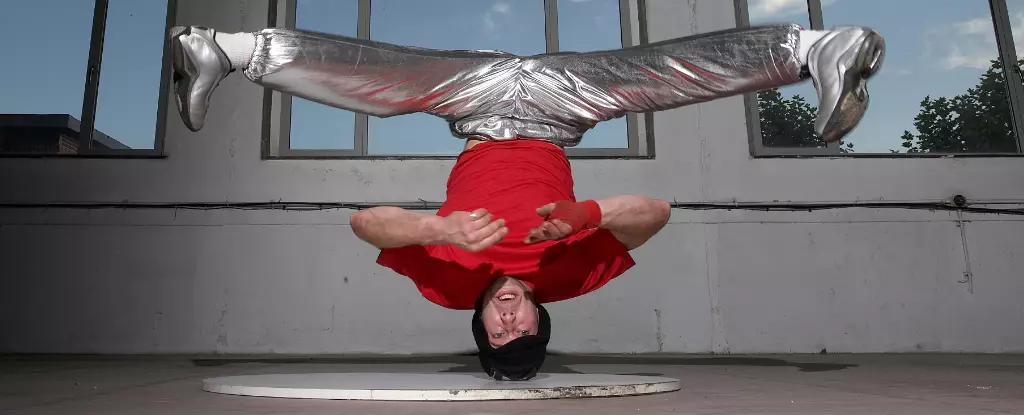Breakdancing, an exhilarating form of street dance that emerged in the late 20th century, is frequented by practitioners known as B-boys and B-girls. While the dance style is revered for its creativity and physical prowess, it is accompanied by a unique set of injuries that can often go unnoticed, notably the condition termed “headspin hole” or “breakdancer bulge.” This peculiar phenomenon, which manifests as a cone-shaped bump on the head, is the result of the physical demands placed on the body during intricate headspinning maneuvers.
The striking yet alarming report from 2024 highlighted the experiences of an experienced breakdancer who had been practicing for nearly two decades. Over time, repetitive headspins led to structural changes in the scalp, driven largely by the body’s in-built protective mechanisms. The epicranial aponeurosis—a connective tissue layer crucial for scalp function—thickens as a response to continuous stress. This condition emphasizes a crucial yet often overlooked aspect of athletic discipline: the physical toll that can accompany dedication and skill.
The “headspin hole” is not merely an aesthetic issue; it reflects a deeper medical response to trauma. As dancers rotate their heads in rapid succession, the mechanical forces at play lead to inflammation and a form of localized protection involving fat accumulation beneath the skin. This process bears similarity to how calluses form on hands and feet in response to friction and pressure, demonstrating the body’s remarkable adaptability to sustain its physical integrity.
However, breakdancing injuries extend beyond the peculiarities of head-related ailments. A range of musculoskeletal injuries are prevalent among breakdancers, impacting the wrists, knees, hips, and ankles. The popular moves like “windmill” and “backspin” not only showcase artistic talent but also bear the risk of bursitis—an inflammation condition linked to overuse and trauma of joints. This calls attention to the importance of proper training, conditioning, and, ideally, preventative measures within the breakdancing community.
While serious injuries potentially lead to life-altering conditions—such as the case of Ukrainian breakdancer Anna Ponomarenko who suffered a pinched nerve leading to temporary paralysis—the overall narrative surrounding breakdancers must also take into account the resilience and community support inherent in the culture. Despite their injuries, many dancers continue to pursue their craft, as seen in Ponomarenko’s inspiring journey back to competitive dancing following a significant setback.
This resilience parallels the broader discourse on athletic injuries across various sports. It raises questions about the balance between passion and risk management. Just as athletes in basketball, football, or gymnastics adopt protective gear to mitigate injury risk, similar practices are emerging within the breakdancing community, prompting discussions on safety innovation. Taking cues from these established sports could enhance breakdancers’ long-term health and career viability.
Interestingly, the issue of cranial deformation is not exclusive to breakdancers. In a surprising twist, new parents may notice cone-shaped heads in newborns due to a variety of orderly birth processes. Conditions such as caput succedaneum or cephalohematoma arise from the physical forces exerted during childbirth, illustrating how human bodies adapt to external pressures from a very early stage.
Such insights underline the complexity of structural adaptation and the importance of compassionate understanding towards those who appear “different” due to natural anatomical variations. This resonates within breakdancing culture as well, where physical uniqueness, including injuries like headspin hole, can contribute to a dancer’s identity and story.
Reflecting on the physical demands of breakdancing brings forth an acknowledgment of its inherent risks alongside its artistic beauty. The community of breakdancers, while dazzling audiences with awe-inspiring performances, must also navigate the often-hidden challenges of injuries that threaten their craft.
As we advocate for awareness and education surrounding these unique injuries, important discussions about protective strategies and injury management arise. Ultimately, embracing the vibrant yet demanding world of breakdancing requires recognition of its duality—the interplay of passion for movement and the necessity of safeguarding one’s well-being.


Leave a Reply